The diesel injector is one of the main components of the engine power system, which directly supplies fuel to the combustion chamber to obtain an air-fuel mixture. This part is the most subject to wear and requires periodic maintenance. The completeness of combustion of fuel in the cylinder, starting, dynamics and efficiency of the engine, as well as the toxicity of exhaust gases, depend on the quality of its work. Some drivers neglect routine maintenance, as a result of which the nozzles fail, requiring repair or replacement.
Purpose and principle of operation of diesel injectors
The main task of the injector in a diesel engine is to atomize the fuel while ensuring the tightness of the combustion chamber. The operation of power systems with mechanical control of nozzles occurs in the following order:
- Fuel is supplied from the fuel tank to the high pressure pump.
- The pump in the required sequence distributes and pumps fuel into the lines leading to the nozzles.
- In the nozzle, the fuel presses on the fitting, and from it it diverges through the fuel channels to the atomizer, which is closed by a needle with a spring.
- Under pressure, the needle opens and closes after injection.
Depending on the method of controlling the injection process, diesel injectors, in addition to mechanical ones, are divided into the following types:
- Electrohydraulic, characterized by the presence in the design of an electromagnetic valve, a control chamber, an intake and drain throttle. The principle of their operation is based on the application of fuel pressure both during injection and at the end, with the participation of an electronic valve that opens the drain throttle on command from the ECU.
- Piezoelectric. They are distinguished by high response speed and the possibility of multiple injections in one cycle. This is done with the help of a piezo element acting on the pusher body, which opens the switching valve for fuel to enter the line.
Signs of malfunctioning diesel injectors
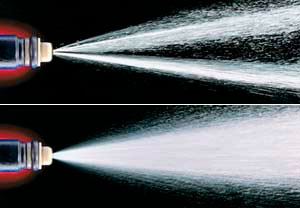
Injector malfunctions in a diesel engine have the following characteristic symptoms:
1. In case of uneven spraying (nozzle "pouring"):
- Loss of engine power and the presence of blue smoke from the exhaust pipe;
- Strong knock, reminiscent of the knock of a connecting rod;
- Uneven operation of the power unit caused by a malfunction of individual cylinders.
2. If the operating pressure of the injection drops (due to fatigue of the springs or wear of the remote shims):
- The presence of blue or black smoke from the exhaust;
- Rigid engine performance.
3. Lack of tightness of the nozzle body, which manifests itself in fuel leaks from the body connections.
Checking diesel injectors
If there are signs of a malfunction of the injectors, they are checked. The procedure can be carried out both in garage conditions and at service stations using a diagnostic stand. The second method is the most optimal, but has disadvantages in the form of a high cost of services and a significant remoteness of the service. There are the following ways to check the health of the injectors:
1. On a running diesel engine, they set such speed when the failures of its operation are heard especially clearly. The nozzles are sequentially disconnected from the high pressure line by loosening the union nut on the corresponding pump fitting. When disconnecting a faulty injector, the nature of the engine will not change.
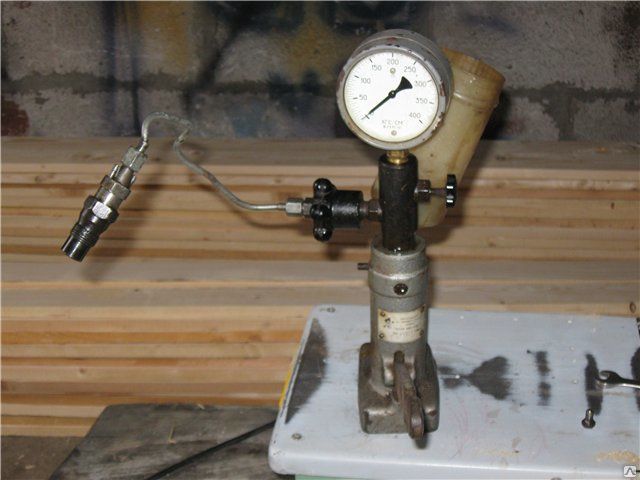
2. Checking with a maximeter, which is made in the form of a special nozzle with a calibration scale for setting the required diesel fuel injection pressure. The device is a control sample, which analyzes the effectiveness of the spray and the compliance of the actual pressure with the required one at the time of injection.
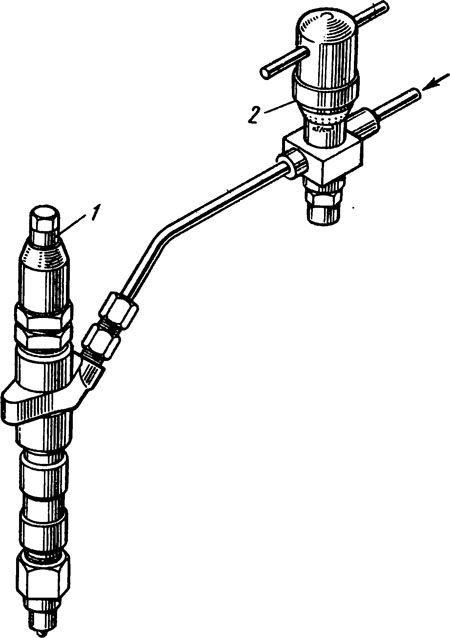
3. Checking with a control sample of the working nozzle, which is compared with the rest. To do this, a tee is installed on the fuel equipment, with the help of which the working and tested nozzles are simultaneously installed. Loosen the nuts on the remaining pipelines leading from the high pressure pump to the untested injectors, cutting off the fuel supply. On the decompression mechanism, they set the maximum fuel supply and begin to rotate the crankshaft of the motor. In the event of a malfunction, the injector will show differences from the standard in terms of the start time and injection quality.
Diesel injector repair
Contamination of the channels inside the nozzle through which the fuel passes contributes to the deterioration of fuel atomization and disruption of the formation of an air-fuel mixture. The most uniform pulverization is violated by the resins contained in the solarium. Flushing helps to eliminate the problem of violation of the fuel supply by the injectors. This procedure ensures that contaminants inside the fuel channels are removed. For its implementation, the following methods are used:
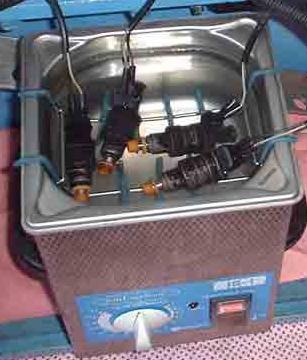
1. Cleaning with ultrasound. An effective way to remove dirt, which is carried out on special equipment. The removed nozzles are placed in a special liquid and acted upon by ultrasonic vibrations, during which the dirt in the nozzle is destroyed in a short time.
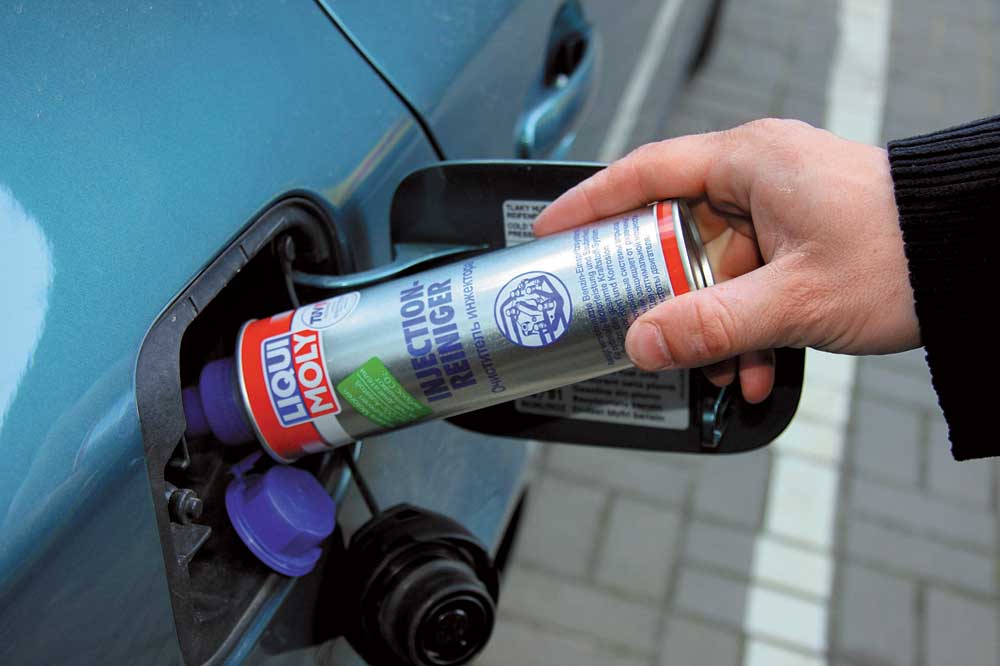
2. Washing with fuel containing special additives. The most popular among motorists, as it does not require the use of expensive equipment. It is the addition of an additive to the fuel, which, when passing through the nozzle, will dissolve deposits. The effectiveness of the method has not been proven.
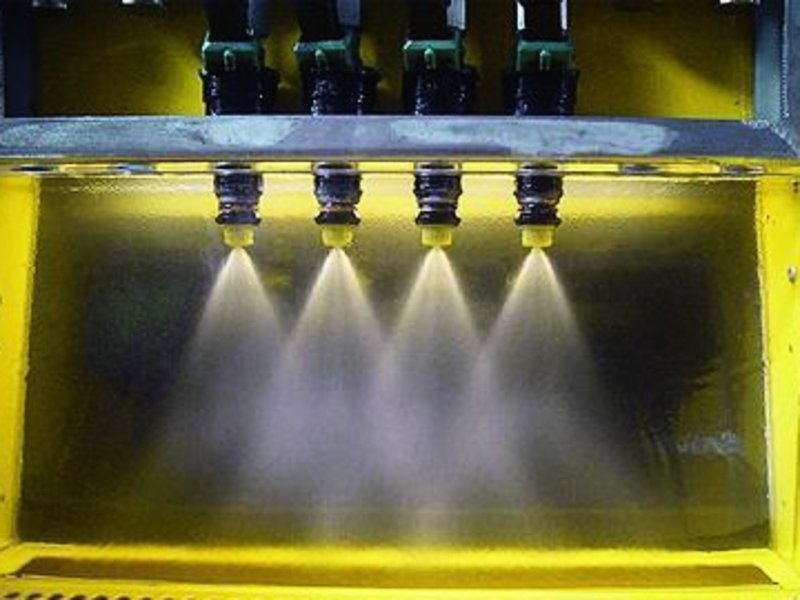
3. Washing on the stand with special liquids. Purification takes place at high pressure due to circulation. The method is reliable and highly efficient.
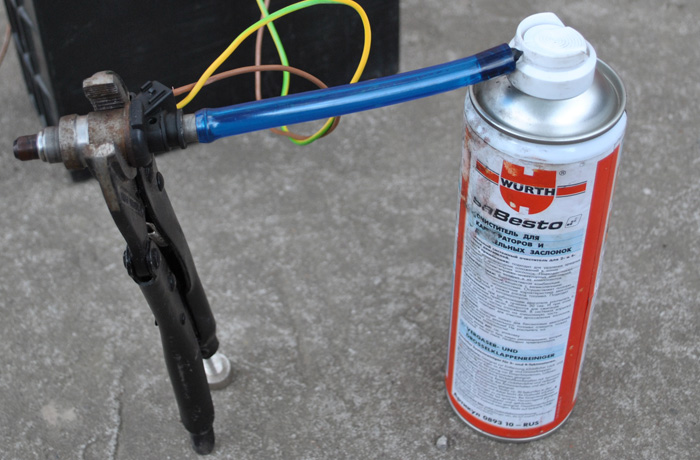
4. Manual flush, which simulates the operation of the nozzle. A fairly effective and inexpensive method that does not require the use of special equipment. To carry it out, the nozzles are dismantled together with the rail and fixed above the container. The cleaning liquid is supplied through a transparent silicone tube. The nozzle dispenser is activated by an electric current supplied through the wires from the battery. Complete cleaning occurs after 5-10 minutes. liquid spray. The process itself consists of the following steps:
- Filters and rubber seals are removed from the nozzle so that they do not fail under the influence of liquid;
- Organize a tight connection of the cylinder with liquid and nozzles through a silicone tube;
- Supply power from the battery using a pair of wires;
- A button is brought to the break of one wire to open the circuit, the second wire is left intact;
- When the button is pressed, an injection occurs, which continues until the moment of uniform spraying of the liquid jets.
Quite often, poor-quality injection occurs due to clogging or wear of the injector nozzles, which is quite clearly visible in the process of fault diagnosis. To eliminate breakage, the body of the part is disassembled and thoroughly washed in kerosene, external carbon deposits are removed with a wooden scraper, and the holes are cleaned with soft steel wire, the diameter of which is smaller than the nozzle hole. If the nozzle size increases by more than 10%, or the difference in the diameter of the holes by 5%, the atomizer is replaced with a new one.
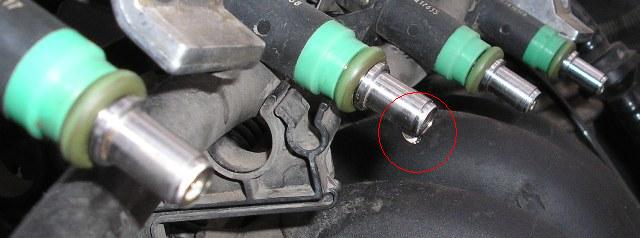
Sometimes the nozzle may leak, which can be eliminated by lapping the needle to the seat. A leak can also occur if the seal is broken at the end of the needle (sealing cone). Lapping is done with GOI paste diluted in kerosene, in which it is avoided from getting into the gap between the guide and the needle itself. After lapping, everything was washed in kerosene or pure diesel fuel, blown with compressed air, and after assembly, they are again tested for tightness.
To make your nozzles last longer, use.
Diesel injector replacement
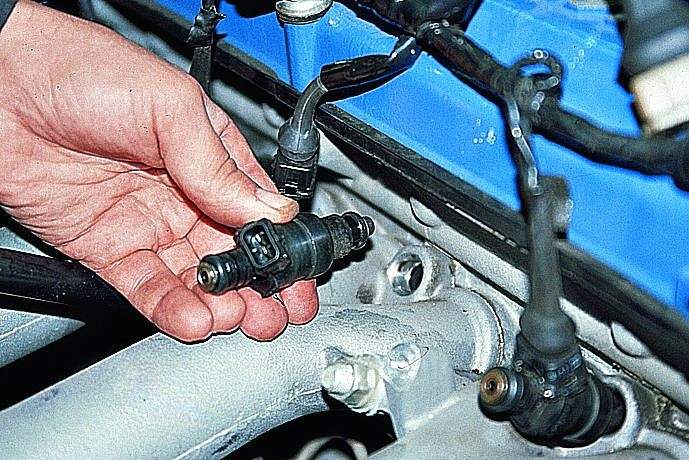
Replacement of diesel injectors is carried out with a complete failure of the part. The procedure performed by the service station workers is quite expensive, but you can do it yourself. This will require the following tools:
- Torque wrench with extension.
- Special head for injectors.
- Open-end wrench for 17.
- Tweezers.

The replacement procedure is carried out in the following order:
- Unscrewing nuts from high pressure pipes.
- Unscrewing the nozzles themselves (sometimes it is difficult due to the thread sticking).
- Dismantling the thermal insulating washers or their remains with tweezers (the old washers cannot be reinstalled).
- Installation of new thermal insulating washers and new nozzles, which are screwed in with the necessary force using a torque wrench.
- Reassemble the fuel system in reverse order.







